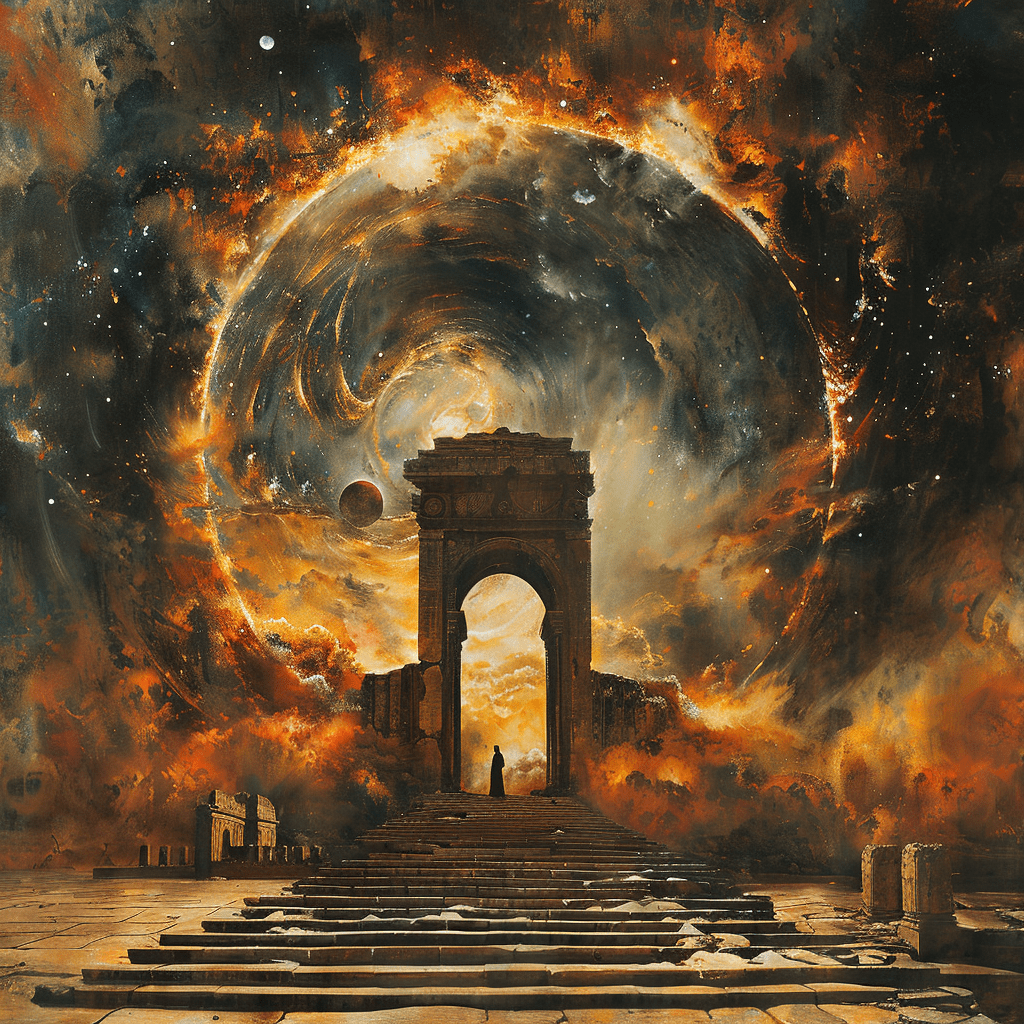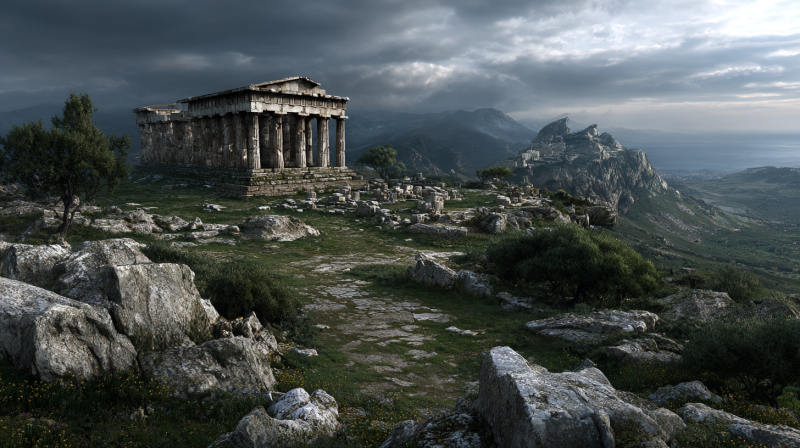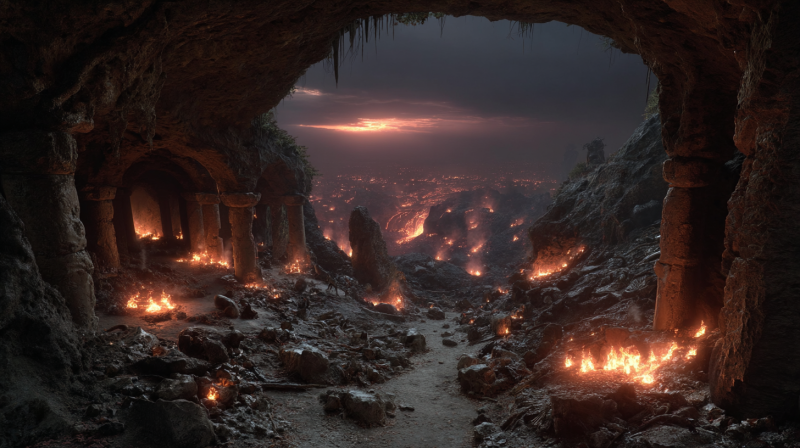In the tapestry of ancient civilizations, woven intricately with beliefs, traditions, and stories, lie sacred places and rituals that form the cornerstone of their existence. From the grandeur of temples reaching for the heavens to the solemnity of sacrificial rites, these practices not only shaped societies but also offered a window into the depths of human imagination and spirituality. Join me on a journey through time and myth as we explore the sacred landscapes and rituals of our ancestors, with each step uncovering layers of meaning and mystery.

The Temple: Gateway to the Divine
In the heart of every ancient civilization stood a sanctuary, a physical manifestation of the divine where mortals communed with gods. The temple, with its towering columns and intricate carvings, served as a bridge between the earthly realm and the heavens above. In ancient Mesopotamia, the ziggurats rose majestically, their terraced steps ascending towards the realm of the gods. At the Temple of Karnak in Egypt, colossal statues of pharaohs stood guard as priests performed sacred rites to honor the gods.
But beyond their awe-inspiring architecture, temples were more than just places of worship; they were centers of knowledge, culture, and power. Within their hallowed halls, priests deciphered celestial movements, chronicled histories, and preserved sacred texts. They were repositories of wisdom and conduits of divine guidance, shaping the course of civilizations for millennia.
The Rite of Sacrifice: Offering to the Gods
No discussion of ancient rituals would be complete without delving into the enigmatic practice of sacrifice. Across cultures and continents, from the Aztecs of Mesoamerica to the Vikings of Scandinavia, the act of offering life to the gods was a solemn and sacred duty. Whether it was the blood of a prized animal or the ultimate sacrifice of a human life, these rituals were performed with reverence and purpose.
The reasons behind sacrificial rites were varied, ranging from appeasing wrathful deities to ensuring bountiful harvests. In honor of Athena, the goddess of wisdom and war, lavish sacrifices of cattle, sheep, and even entire herds marked festivals like the Panathenaea in ancient Greece. Similarly, in the Aztec empire, the hearts of captured warriors were offered to the sun god Huitzilopochtli, believed to sustain the cosmic order and ensure the sun’s daily journey across the sky.

Beyond the Physical: Symbolism and Meaning
While temples and sacrifices held tangible significance in the lives of ancient peoples, their true power lay in the symbolism and meaning imbued within these practices. The temple, with its axis mundi connecting heaven and earth, symbolized the cosmic order and the harmony between mortal and divine. Every stone, every carving, was a testament to the eternal dance of creation and destruction, life and death.
Similarly, the act of sacrifice was more than just an offering of flesh and blood; it was a symbolic act of reciprocity between gods and humans. By giving away their most precious possessions, be they livestock or loved ones, ancient peoples believed they could forge a bond with the divine and ensure their continued favor and protection. In this way, sacrifice served as a reaffirmation of the cosmic order and the interconnectedness of all life.
Echoes of the Ancients
As we reflect on the sacred places and rituals of ancient mythology, we are reminded of the enduring legacy of our ancestors. Though millennia may separate us from the temples of old and the altars of sacrifice, their echoes linger in the depths of our collective consciousness, whispering of a time when gods walked among mortals and miracles were commonplace.
In a world often fraught with uncertainty and turmoil, perhaps there is wisdom to be found in the rituals of old. For in the solemnity of sacrifice and the sanctity of the temple, we glimpse a truth as timeless as the stars themselves: that we are but small players in a grand cosmic drama, bound together by threads of fate and destiny.
So let us honor the sacred places and rituals of our ancestors, not as relics of a bygone era, but as living testaments to the enduring power of the human spirit and the eternal quest for meaning and purpose in an ever-changing world. Because of the ancients’ knowledge and the divine light, we find not only solace but also inspiration in their shadows to create our own stories and shape our own futures.
In closing, let us remember the words of the poet Rainer Maria Rilke, who wrote, “Perhaps all the dragons in our lives are princesses who are only waiting to see us act, just once, with beauty and courage. Perhaps everything that frightens us is, in its deepest essence, something helpless that wants our love.”
May we, like the ancients who came before us, muster the courage to face our fears, embrace the unknown, and venture into the uncharted realms of the soul with the help of the ages-old wisdom of sacred sites and rituals. In the end, it is not the destination that matters, but the journey itself and the lessons we learn along the way.
References:
- “Ancient Mesopotamian Temples.” Ancient History Encyclopedia.
- “Temples of Ancient Egypt.” Ancient History Encyclopedia.
- “Greek Sacrificial Ritual, Olympian and Chthonian.” The Ancient Greek World.
- “Aztec Sacrifice.” Ancient History Encyclopedia.
- Eliade, Mircea. “The Sacred and the Profane: The Nature of Religion.” Harcourt, Brace & World, 1959.
- Frazer, James George. “The Golden Bough: A Study in Magic and Religion.” Macmillan, 1890.
- Rilke, Rainer Maria. “Letters to a Young Poet.” W. W. Norton & Company, 1929.





